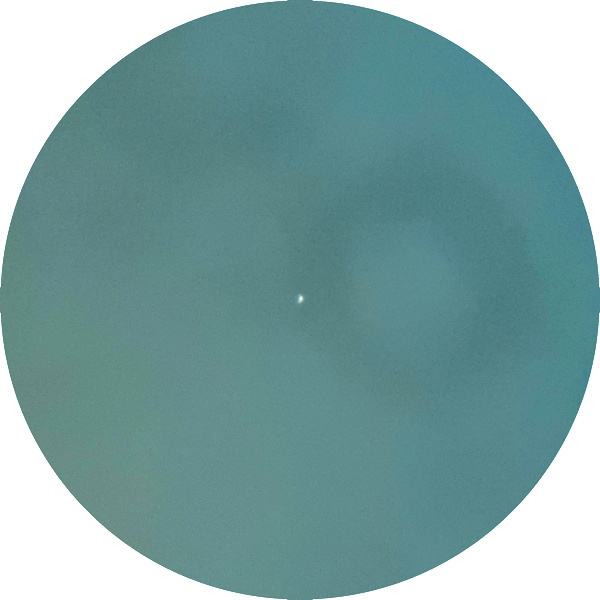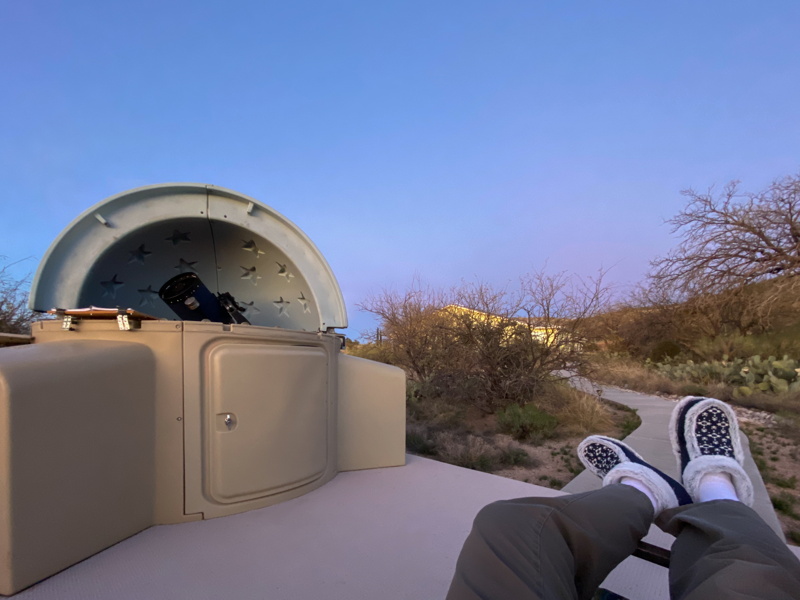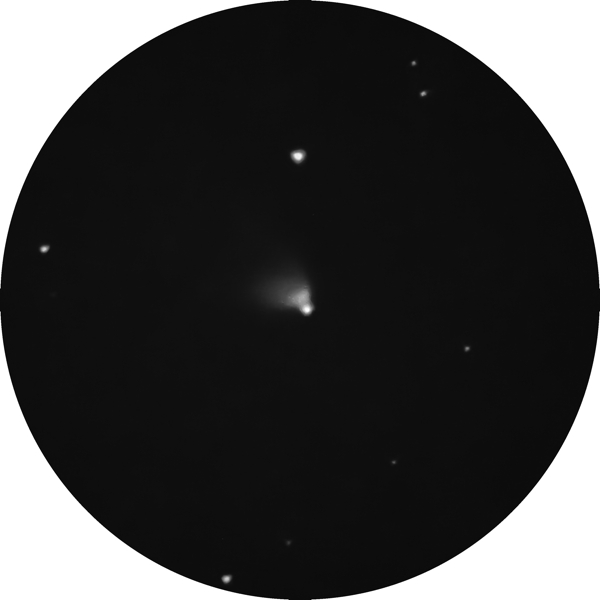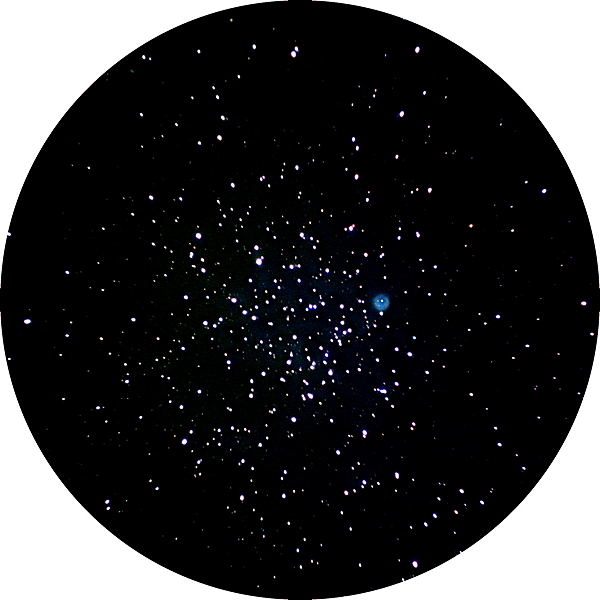iPhone imaging Mercury, Venus,
Hubble's Variable Nebula, Messier Open Star Clusters
Posted: 16 February 2020
Friday, 14 February 2020, dawned cloudy and stayed that way. Saturday, 15 February, dawned clear with a clear sky forecast for the night. I went to the observatory before sunset to image the planets Mercury and Venus in the daytime sky.
|
Open: Saturday, 15 February 2020, 1722 MST Temperature: 81°F |
Session: 1438 Conditions: Mostly clear |
Equipment:
12" f/8 LX600 w/StarLock
2" 24mm UWA eyepiece
1.25mm 15mm eyepiece
2" 30mm eyepiece
Camera:
iPhone 11 Pro Max
1727 MST: LX600 ON, StarLock OFF, High Precision OFF.
1732 MST: Meade Stella Wi-Fi Adapter ON.
Used SkySafari 6 Pro to GOTO Mercury. Could not see Mercury. Then slewed to Venus and viewed its near half-phase, 102X. Slewed back to Mercury and this time viewed its small crescent phase, 102X.
1751 MST: Wi-Fi OFF.
Tried to view Mercury, 163X, but due to the bright sky, the smaller field-of-view, and the focus change, I was not successful to view it at this higher magnification. Switched back to 102X. Took this handheld iPhone 11 Pro Max afocal 102X using the iOS app NightCap Camera (ISO 21, 1/800sec, 2X lens). (The "donut" is an artifact.)

Slewed back to Venus and viewed it, 163X. Good view. I mounted the iPhone on the 15mm eyepiece using the Phone Skope adapter. Did a 10 second video recording (30 fps) using NightCap Camera (ISO 21, 2X lens) and stacked the resulting 313 video frames in the Mac app Lynkeos. This is the result:

1819 MST: clouds were increasing. I decided to relax on the observatory patio bench while waiting for the stars to come out.

1842 MST: took this iPhone photo of the western sky, the planet Venus (upper left), and the observatory.

1859 MST: I then began watching for SpaceX Starlink satellites from the 2nd launch in November 2019. These satellites should all have reached their final orbital height. Heavens-Above was predicting that several satellites would be Mag. +4.1 to +4.3. My viewing attempt this night would be hampered by clouds in the southern sky that was reflecting light from Tucson, Oro Valley, and Catalina in the dark twilight sky.
1914-1919 MST: I was surprised to see eight Starlink satellites passing through the lower portion of the constellation of Canis Major. They were all about Mag. +4.5.
1921 MST: took a zenith SQM reading of 20.9 and a SQM of 20.69 where I saw the satellites low in the southern sky. I reported my observations to the International Dark-Sky Association.
1931 MST: began preparing for afocal iPhone 11 Pro Max imaging with the 12" telescope.
Viewed NGC2261 (Hubble's Variable Nebula), 102X and 163X.
1938 MST: StarLock ON.
Took this StarLock autoguided afocal 163X image of NGC2261 (Hubble's Variable Nebula) using NightCap Camera (Long Exposure, Light Boost, ISO 8064, 1sec, 1 minute, 2X lens), Phone Skope adapter.

I then viewed Hubble's Variable Nebula, 81X.
Slewed to M46 (open star cluster) and viewed it and NGC2438 (planetary nebula), 81X. Mounted the iPhone on the 30mm eyepiece using the Levenhuk adapter. I then began imaging several Messier open star clusters for my iPhone Messier Catalog photo album. All images with NightCap Camera (Long Exposure, Light Boost, ISO 12500, 1sec, 1 minute, 1X lens).
M46 and NGC2438 (planetary nebula)

M47

M48

M50

M67

M93

2058 MST: StarLock OFF.
Ended imaging.
Viewed M93 (open cluster), 102X.
2111 MST: LX600 OFF.
2119 MST: took a SQM reading through thin clouds and reported the result to the Globe at Night.
|
Close: Saturday, 15 February 2020, 2128 MST Temperature: 47°F |
Session Length: 4h 06m Conditions: Thin scattered clouds, SQM 21.06 |
Comments are welcome using Email. Twitter users can use the button below to tweet this report to their followers. Thanks.
Cassiopeia Observatory Home Page
Copyright ©2020 Michael L. Weasner / mweasner@me.com
URL = http://www.weasner.com/co/Reports/2020/02/16/index.html
